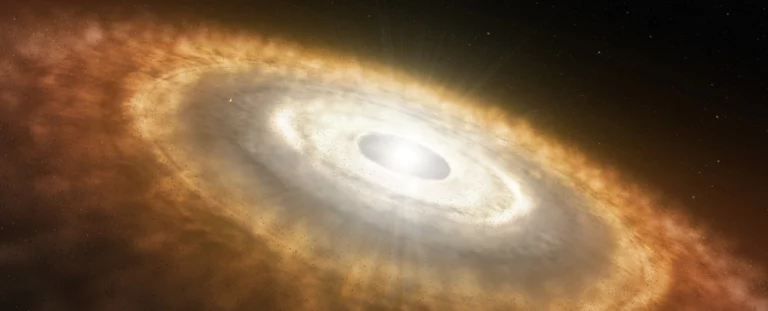Water on Baby Planets Could Be Protected from Hostile Stars by Sneaky Mechanisms
The process of forming rocky planets is hazardous, chaotic, and hot. The accumulation of planetesimals generates heat and pressure that affects the newborn world. Meanwhile, the nearby young star constantly bombards it with intense radiation, which likely vaporizes any surface water bodies, posing a significant challenge for life to emerge and thrive. As water is an essential requirement for life, planets revolving around these stars seem like ideal candidates for life, but the radiation threat diminishes their prospects.

To tackle this issue, researchers at the University of Cambridge have developed an intricate model that depicts a world where the majority of its water is trapped below the surface, not as oceans or lakes but in rocks. This water is technically confined in minerals deep beneath the planet’s surface. If conditions are conducive on these worlds around the most prevalent stars in the Milky Way, they could have ample water that could amount to several oceans of Earth.
The model developed by Clare Guimond, a PhD student at Cambridge, along with two other researchers, focuses on planets that form around M-type worlds orbiting red dwarf stars. Their objective was to determine whether these planets could recover from their tumultuous upbringing and eventually support surface water. According to Guimond, their research suggests that these planets could be a promising avenue for replenishing surface water lost during the host star’s early life. By analyzing minerals that can trap water in their structure, the model provides an estimate of the upper limit of water that a planet can contain deep below its surface.
Sequestering Water on a Forming World
M-type red dwarfs, which are the most abundant stars in the Milky Way, provide an ideal opportunity to study the intricacies of planetary formation. Like other stars, they form through a similar process. However, these stars tend to be volatile and prone to outbursts well into their adult life, which can be detrimental to any nearby planets or protoplanets.
If water isn’t lost through radiation, it can migrate underground, but the question remains whether this happens with all rocky planets and what size planet is needed to accomplish this.
According to the research, the amount of water that a planet can hide depends on its size and the quantity of water-bearing minerals it contains. The majority of water ends up in the upper mantle, which is the rocky layer directly beneath the crust that generally contains anhydrous minerals.
The steam and vapor that volcanoes produce come from this layer and can eventually make their way back to the surface through eruptions.
The study also found that larger planets, approximately two to three times the size of Earth, typically have drier rocky mantles because the water-rich upper mantle makes up a smaller proportion of their total mass.
Hidden Water and Planetary Science
The new model developed by the scientists not only sheds light on the conditions that existed during Earth’s formation, but also on how water-rich objects accrete to form planets. The primary focus of this model, however, is to help planetary scientists understand the formation of larger rocky planets around M-type red dwarfs. Due to the turbulent conditions surrounding their adolescent stars, these planets are likely to have experienced a chaotic climate for extended periods, which may have led to the migration of liquid water deep underground. Once the stars’ activity subsided, water could have reemerged through various means.
This model could also potentially clarify how early Venus transformed from a barren environment to a world with water. Although the existence of water on Venus is still disputed, if the planet did have liquid oceans and pools around four billion years ago, the question is how did they form?
Oliver Shorttle, one of the researchers involved in the study, stated that “If that [happened] Venus must have found a way to cool itself and regain surface water after being born around a fiery Sun. It’s possible that it tapped into its interior water in order to do this.”
Implications for Exoplanet Searches
The current study may have significant implications for the search for habitable exoplanets across the galaxy. According to Shorttle, the findings could provide valuable guidance on which planets to prioritize in our search for potentially habitable worlds. Specifically, he suggests that we should focus on planets that are similar in size to Earth, rather than those that are much larger or smaller.
The research also sheds light on the mineral composition and formation of rocky planets, helping to explain what materials are typically found beneath the planet’s surface. Moving forward, additional studies are likely to explore the potential habitability and climate conditions of both rocky and water-rich planets, further expanding our understanding of the universe.
Do not forget to share your opinion with us to provide you with the best posts !




0 Comments